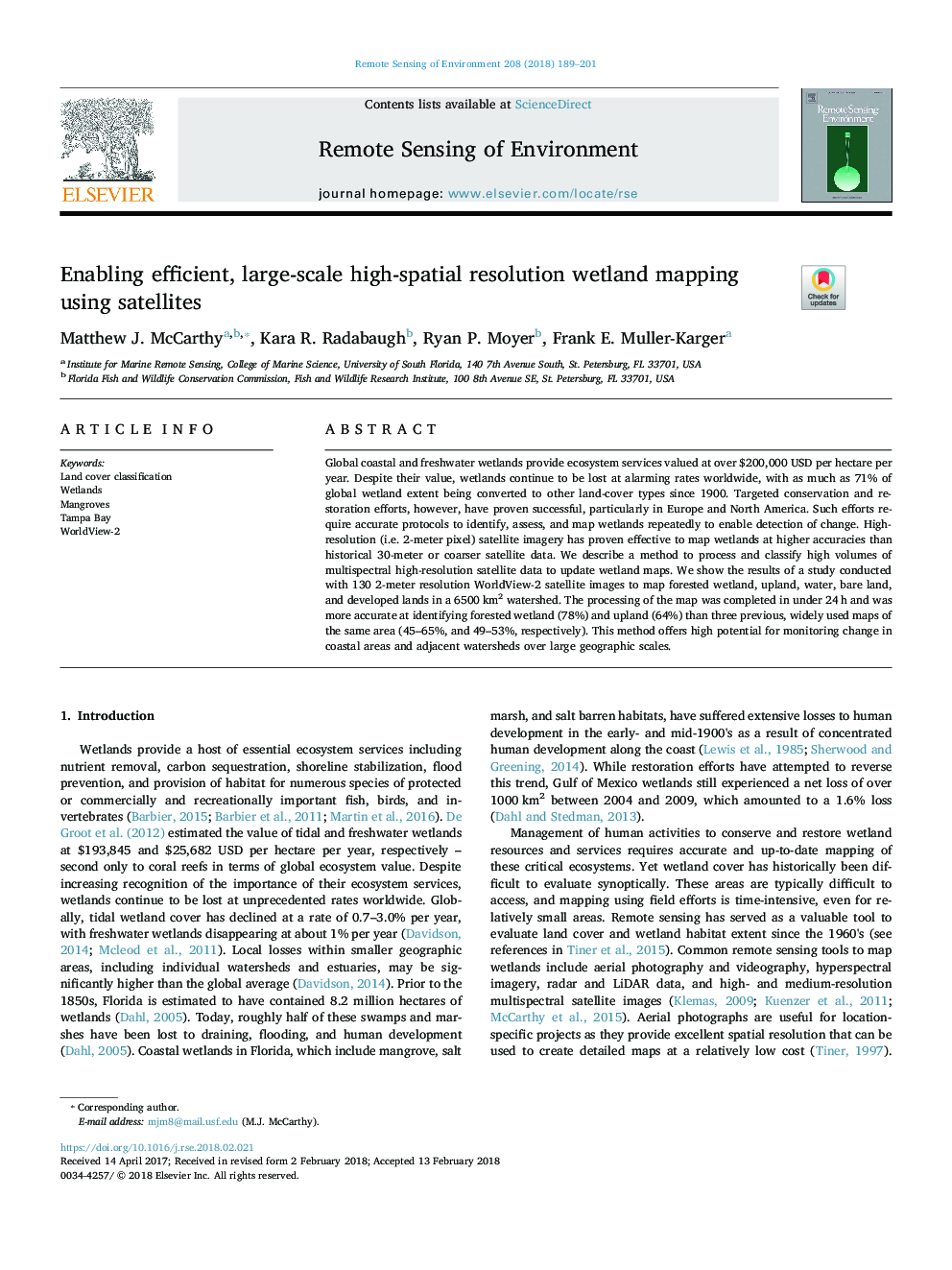| Article ID | Journal | Published Year | Pages | File Type |
|---|---|---|---|---|
| 8866701 | Remote Sensing of Environment | 2018 | 13 Pages |
Abstract
Global coastal and freshwater wetlands provide ecosystem services valued at over $200,000 USD per hectare per year. Despite their value, wetlands continue to be lost at alarming rates worldwide, with as much as 71% of global wetland extent being converted to other land-cover types since 1900. Targeted conservation and restoration efforts, however, have proven successful, particularly in Europe and North America. Such efforts require accurate protocols to identify, assess, and map wetlands repeatedly to enable detection of change. High-resolution (i.e. 2-meter pixel) satellite imagery has proven effective to map wetlands at higher accuracies than historical 30-meter or coarser satellite data. We describe a method to process and classify high volumes of multispectral high-resolution satellite data to update wetland maps. We show the results of a study conducted with 130 2-meter resolution WorldView-2 satellite images to map forested wetland, upland, water, bare land, and developed lands in a 6500â¯km2 watershed. The processing of the map was completed in under 24â¯h and was more accurate at identifying forested wetland (78%) and upland (64%) than three previous, widely used maps of the same area (45-65%, and 49-53%, respectively). This method offers high potential for monitoring change in coastal areas and adjacent watersheds over large geographic scales.
Related Topics
Physical Sciences and Engineering
Earth and Planetary Sciences
Computers in Earth Sciences
Authors
Matthew J. McCarthy, Kara R. Radabaugh, Ryan P. Moyer, Frank E. Muller-Karger,
